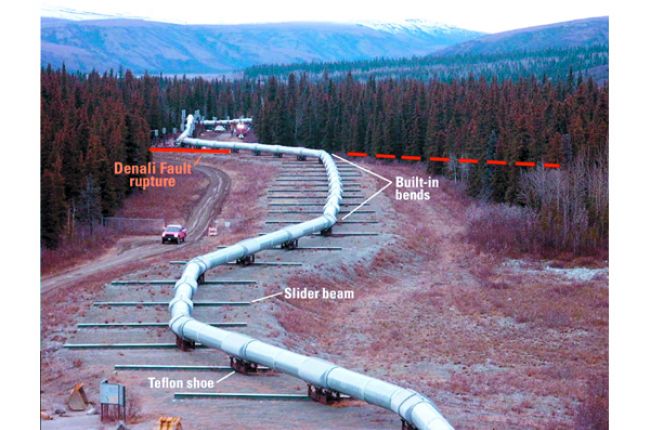How do those laying trans-oceanic cables deal with continental drift? Sure the expansion rate is not a lot and the cables have an expected lifespan but the cables are relatively fragile and the stresses must be enormous and they do have to last their expected lifetime. Do they lay a S-loop at the plate divide or what?
The expansion in 100 years is probably no more than part of the overall wavy-track lay. Remember, they were laying TO cables long before they knew about drift. (Poor Wegener.) There are many other factors that would wear out and ruin a cable before this movement would.
Do you picture transoceanic cables as taut the rest of the way, somehow? Like a string stretched between two cans? That’s not the case.
There’s plenty of slack (including all thebends left from past repairs), but even absent that, the rate of seafloor spreading is just a few cm/year at most, averaged out over thousands of km of cable, I think they can stretch a little, especially since they’re actually 100-km segments between repeaters.
Turbidity current sediment flows on the continental slope are a much greater danger to submarine cables than seafloor spreading, when it comes to geological risks…
Not at all, but I do expect that the company laying the cable wants to minimise the amount of cable laid.
Thanks. Put a big thick rope in some mud and see how easy it is to move. The movement required may be only a few cm per year but the force required to shift that mass of cable must be considerable. Your graphic shows that the cable can withstand being pulled up so it must be able to withstand a small lateral shift.
Occasionally ship anchors rip submarine cables from their shoreline attachment points, too.
A worthy read on the history of submarine cables:
There’s a Wikipedia page regarding several submarine cable disruptions in 2008, which included this paragraph:
TL,DR: submarine cable breaks/repairs happen frequently; it seems very likely that breaks/repairs due to continental drift are a very small subset of all submarine cable breaks/repairs and are therefore probably no big deal.
Doesn’t continental drift happen mostly in one spot? Just put some extra cable at the mid ocean ridge, and I don’t think the mass of the whole cable will be that important.
Might find more on this by reading about pipelines and earth movement. Search for the words… pipeline design earth movement
Here is a picture where the design allows a pipeline to slide left/right as well as expand or contract without breaking…

If you run an extension cord all the way across your patio, the amount of expansion even on a really hot day won’t pull it out of the wall.
The same is true when talking about 3 cm of drift over a distance of 3000 km.
The movement happens at the Mid-Ocean Ridge in the form of a series of earthquakes.
Slight nitpick - the new crust is magma upwelling and emplacement as basalt and gabbro at the MOR, the associated earthquakes and lateral movement are on the transform faults which are perpendicular to the ridge, but not part of the ridge itself, sensu stricto.
The rate of continental drift is of the order of a few centimeters per year. Say around a few feet in a decade. This negligible compared to other factors which affect undersea cables.